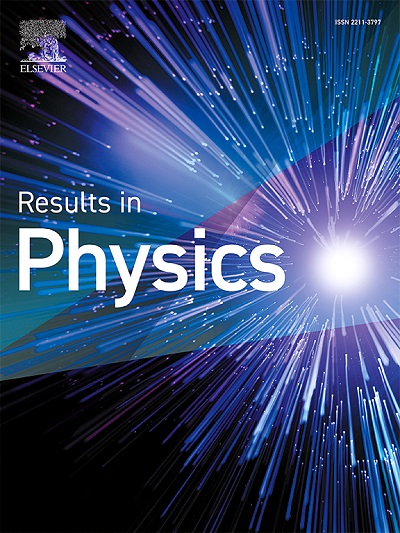Investigation of Nd3+-doped oxide and oxy-fluorotellurite glasses for optical and radiation shielding applications
IF 4.4
2区 物理与天体物理
Q2 MATERIALS SCIENCE, MULTIDISCIPLINARY
引用次数: 0
Abstract
This paper compares the impact of incorporating barium in oxide and fluoride form in tellurite host matrix on the glass properties for varied applications. It is found that BaO doped glass exhibits higher density and energy bandgap values compared to that with BaF2. The presence of non-bridging sites that are related to fluorine and oxygen results in the dominance of the 748 cm−1 peak in the Raman spectra. The spectroscopic quality factor for both samples was calculated to be above one, with the calculated and experimental radiative lifetime being larger for sample with BaF2. The fluorescence peak positions were shifted due to the changes in the glass network. Radiation shielding values, calculated using Phy-X/PSD software, indicated that the BaF2 based glass host has better attenuation coefficients, half value layer, and mean free path compared to the BaO doped glass.
求助全文
约1分钟内获得全文
求助全文
来源期刊

Results in Physics
MATERIALS SCIENCE, MULTIDISCIPLINARYPHYSIC-PHYSICS, MULTIDISCIPLINARY
CiteScore
8.70
自引率
9.40%
发文量
754
审稿时长
50 days
期刊介绍:
Results in Physics is an open access journal offering authors the opportunity to publish in all fundamental and interdisciplinary areas of physics, materials science, and applied physics. Papers of a theoretical, computational, and experimental nature are all welcome. Results in Physics accepts papers that are scientifically sound, technically correct and provide valuable new knowledge to the physics community. Topics such as three-dimensional flow and magnetohydrodynamics are not within the scope of Results in Physics.
Results in Physics welcomes three types of papers:
1. Full research papers
2. Microarticles: very short papers, no longer than two pages. They may consist of a single, but well-described piece of information, such as:
- Data and/or a plot plus a description
- Description of a new method or instrumentation
- Negative results
- Concept or design study
3. Letters to the Editor: Letters discussing a recent article published in Results in Physics are welcome. These are objective, constructive, or educational critiques of papers published in Results in Physics. Accepted letters will be sent to the author of the original paper for a response. Each letter and response is published together. Letters should be received within 8 weeks of the article''s publication. They should not exceed 750 words of text and 10 references.
 求助内容:
求助内容: 应助结果提醒方式:
应助结果提醒方式:


